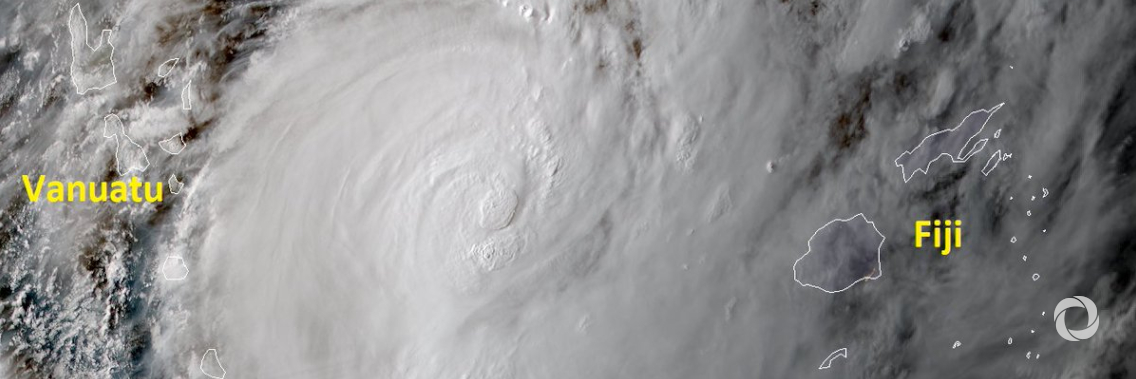Low-lying islands in the South-west Pacific Ocean are counting the human and economic toll of Severe Tropical Cyclone Harold, which destroyed key infrastructure and highlighted the challenges of disaster and public health management in the COVID-19 era. At its peak, Harold was the equivalent of a Category 5 level hurricane on the Saffir-Simpson scale.
UN Secretary-General António Guterres said he was “deeply saddened” by reports of loss of life and property in Vanuatu, Fiji, the Solomon Islands and Tonga.
“The Secretary-General expresses his deep solidarity with the people of the Pacific as they face the impact of this cyclone, along with other climate-related challenges, as well as the coronavirus pandemic, which adds a worrying new dimension to existing vulnerabilities,” he said.
The tropical cyclone underlined the imperative of activities of all WMO projects that help to strengthen early warning systems and increase resilience of vulnerable Members impacted by severe weather and climate change associated hazards such as coastal and inland flooding, including from storm surge, river floods, and rising sea levels.
The coordination of the forecasts and early warnings for tropical cyclones in the region is provided by the WMO Tropical Cyclone Committee for the South Pacific and South-East Indian Ocean, structured with the Regional Meteorological Specialized Center in Nadi, Fiji, and the National Meteorological and Hydrological Services.
The WMO-supported Climate Risk and Early Warning Systems (CREWS) is helping to strengthen early warning systems and increase resilience in Pacific Islands. This includes seeking to strengthen the ability of the Regional Specialised Meteorological Centre (RSMC Nadi) within the Fiji Meteorological Service to support other Pacific Islands, and enhances the capacity of the national hydrometeorological agencies of Pacific Island Countries and Territories to provide impact-based forecasts of extreme weather events.
Solomon Islands
Harold impacted the Solomon Islands during the hours of 1 to 4 April 2020 with devastating winds accompanied by heavy rains, river flooding, very rough seas, high oceans waves and coastal flooding including storm surges.
It passed through Solomon Islands territorial waters as Category 2 as it tracked further southeast into Vanuatu by 4 April 2020 gaining more strength and being upgraded to Category 5.
Vanuatu
Harold, made landfall in Vanuatu on 6 April with sustained winds of more than 200 km/h – the equivalent of a category 5 storm both on the Saffir Simpson and Pacific scale.
Northern provinces were worst hit, with devastating winds, heavy rainfall and flash flooding. It caused power and telecommunications outages, substantial damage to houses and structures, and destroyed many agricultural areas and crops.
Fiji
Harold hit the islands Vitu Levu and the islands to the east as a Category 4 in the night from 7 to 8 April 2020 causing power outages, blocked roads due to fallen trees, and widespread flooding. As of 14 April, more than 1,541 people were sheltering in 52 evacuation centres in Central, Western and Eastern divisions.
Tonga
Significant damage to the water supply and food crops is reported across Tongatapu, because of the king tides and significant flooding. Destruction is widespread, including significant damage to homes, water supply and food crops is reported in ‘Eua. The storm destroyed important tourist facilities. Inter-agency Initial Damage Assessment team led by NEMO has covered 1,700 households in Tongatapu and 889 in ‘Eua.
Original source: WMO
Published on 14 April 2020

